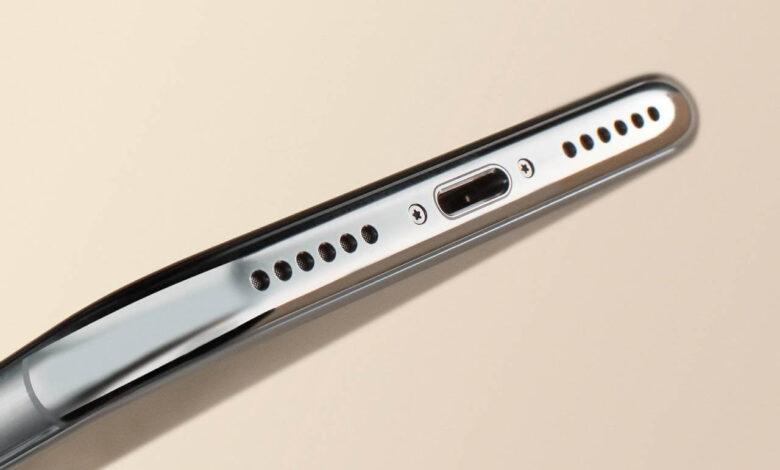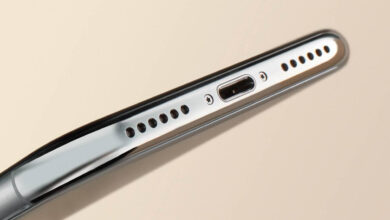Can Phone Speaker Be Replaced? Your Guide to Audio Fixes

When you encounter issues with your phone’s speaker, you might wonder if it’s possible to get it fixed. The good news is that, yes, phone speakers can often be replaced or repaired. Whether your phone no longer rings, the sound is muffled, or you can’t hear during calls, these are all common signs that your speaker might need attention.
The process for fixing a speaker varies depending on your device. For many smartphones, specialized technicians can repair or replace the speaker. This can involve either a simple fix or a more complex process depending on the severity of the damage or the design of your phone. Before you consider repair, it’s also worth checking for software issues that could be causing the problem, as these are often easier to resolve.
Cost is a factor to consider as well. If your phone is under warranty, the manufacturer might cover the repair or replacement. If not, you’ll have to weigh the repair costs against the value of your phone. Sometimes, if the repair is expensive, it might make more sense to invest in a new device. But if you’re not ready to part with your phone, a speaker replacement could be a viable option to bring your device back to life.
Fundamentals of Phone Speaker Functionality
In your smartphone, the speaker plays a crucial role by converting electrical signals into sound. This function allows you to enjoy calls, music, and videos with clear audio output.
Types of Phone Speakers
Your phone may incorporate different types of speakers depending on its design and functionality. Commonly, there are two types:
- Dynamic Speakers: Most phones are equipped with this traditional type of speaker, which uses a diaphragm that vibrates to create sound.
- Piezoelectric Speakers: These are less common and use electric charge to vibrate piezoelectric materials, generating sound.
Common Reasons for Phone Speaker Failure
Several factors can lead to the malfunctioning of your phone’s speaker:
- Physical Damage: Dropping your phone can damage the speaker components.
- Water Exposure: Liquid contact can corrode or short-circuit speaker parts.
- Dust and Debris: Accumulation can block the sound output, leading to muffled audio.
- Overuse at High Volumes: Constantly using the speaker at high volumes may strain the device and deteriorate the sound quality over time.
Assessing Speaker Damage
When your phone’s audio quality declines, it’s crucial to accurately assess the speaker for any damage. This section covers the step-by-step process to help you determine if a replacement is necessary.
Initial Diagnosis
To begin assessing the damage to your speaker:
- Check for obvious signs: Look for any visible damage such as tears or breaks on the speaker mesh.
- Listen for common issues: Distortion, crackling, and faint audio can indicate a damaged speaker.
- Test with audio files: Play different types of audio files to see if the problem persists across various sounds.
- Make a call: Verify if the issue occurs during calls, which could suggest the phone speaker is faulty.
Tools for Speaker Assessment
You might require the following tools to perform a more thorough assessment:
- Magnifying glass: Helps in closely inspecting the speaker for physical damage.
- Clean, dry brush: Useful for clearing away any dust or debris that might be obstructing sound.
- Headphones: Plugging in a set of headphones can help you determine if the issue is with the speaker or the phone’s audio system.
- Diagnostic apps: Some smartphone brands provide built-in hardware tests that you can run to diagnose speaker issues.
Finally, remember that professional diagnosis is beneficial if you’re unsure about the speaker’s condition.
The Speaker Replacement Process
Replacing your phone’s speaker is a detailed process that can restore the audio quality of your device. It’s important to approach the replacement with care, using the right tools and following a step-by-step guide to ensure a successful repair.
Required Tools and Materials
- Screwdrivers: You’ll need a set of precision screwdrivers compatible with your phone’s screws.
- Plastic Pry Tools: To safely open the phone case without damaging it.
- Tweezers: For handling small components.
- New Speaker: Ensure it’s the correct model for your phone.
- Adhesive: If necessary for securing the new speaker in place.
- Optional: Anti-Static Wrist Strap: To prevent static damage to electronic components.
Step-by-Step Replacement Guide
- Power Down: Before you start, turn off your phone to prevent any electrical damage or data loss.
- Remove Screws: Using the appropriate screwdriver, remove the screws from the phone’s casing.
- Open the Case: Gently pry open the case with the plastic tools, starting from one corner and working your way around.
- Disconnect the Battery: Locate and disconnect the battery to prevent any short circuits.
- Remove the Faulty Speaker: Find the speaker module. It might be held in place by screws or adhesive. Remove these carefully, then lift the speaker out with the tweezers.
- Place the New Speaker: Position the new speaker where the old one was located. If your phone uses adhesive, apply it as instructed.
- Reassemble the Phone: Once the new speaker is in place, reconnect the battery and carefully close the case, ensuring all parts align correctly before screwing it back together.
- Test the Speaker: Power on your phone and test the speaker to confirm the replacement was successful.
Remember to handle each component with care as you work through these steps to avoid any additional damage to your phone.
Compatibility and Sourcing Replacement Speakers
When you’re looking to replace a phone speaker, it’s essential to identify the correct speaker model that’s compatible with your phone and know where to source quality replacements.
Identifying the Correct Speaker Model
To ensure compatibility, you must first identify the exact model of your current phone speaker. You can usually find this information:
- On the Speaker: Look for any serial numbers or model identifiers.
- In the User Manual: Your phone’s user manual often lists part numbers.
- Through the Manufacturer: Contact the manufacturer’s customer service for detailed part information.
Where to Buy Replacement Speakers
Once you know what model you need, you can purchase replacement speakers:
- Authorized Dealers: They provide parts that are guaranteed to work with your phone.
- Online Marketplaces: Websites like eBay and Amazon offer a wide range of replacement speakers.
- Specialty Electronics Stores: Stores that specialize in electronics may carry the exact speaker you need.
- Repair Services: Some may offer to source the speaker as part of their repair services.
DIY Versus Professional Replacement
When you’re facing issues with your phone’s speaker, you have two main paths to consider: fixing it yourself or hiring a professional. Your choice will affect not only the cost and time involved but the risk to your device and the quality of the repair.
Risks of DIY Speaker Replacement
- Potential for Damage: You risk damaging other phone components if you’re not familiar with smartphone internals.
- Void Warranty: Attempting a repair yourself might void any existing warranty on your phone.
- Tools and Parts: You’ll need the correct tools and high-quality replacement parts, which might be difficult to source.
Benefits of Professional Service
- Expertise: Professionals have the experience and know-how to handle complex repairs.
- Warranty on Repairs: Many repair services offer a warranty on the work they perform.
- Time-Saving: A professional can often complete the repair much faster than you might manage on your own.
Cost Considerations
When considering a phone speaker replacement, you need to be aware of the potential costs and how your warranty might affect them. Let’s explore these areas to ensure you make a cost-effective decision.
Cost Comparison
- Repairing a Speaker: Professional speaker repair can be more economical than a replacement, particularly if the damage is minor. On average, costs can range from $50 to $200 depending on the speaker type and brand.
- Replacing a Phone: A new phone purchase might be more costly than repair. This could be necessary if your speaker cannot be fixed or if repair costs exceed the phone’s value.
Warranty Implications
- Under Warranty: Check your warranty first—some manufacturers may cover speaker repairs at no cost to you.
- Out of Warranty: If your warranty has expired, consider the repair costs against the residual value of your phone to decide if replacement is a better option. Repair costs can vary significantly, from as low as $20 for minor issues to $90 or more for complex problems.
Post-Replacement Testing
After replacing your phone’s speaker, it’s crucial to conduct tests to ensure the new component works correctly. These evaluations verify the functionality and predict the long-term performance of the speaker.
Functionality Tests
To start, conduct a series of checks to assess the basic functionality of your new speaker:
- Volume Levels: Play audio at various volume levels to confirm the speaker can produce sound without distortion or unusual static.
- Sound Quality: Listen to audio comprising a range of frequencies, including bass, mid-tones, and treble, watching for clarity and richness.
- Microphone Interaction: Make calls or record audio to ensure the microphone’s input doesn’t create feedback or interference with the speaker.
Long-Term Performance Monitoring
Monitor the speaker’s performance over time to detect any potential issues:
- Consistent Audio Output: Check that the volume and quality of sound remain stable through continuous usage.
- Battery Drain: Observe if there’s an unusual battery drain that might indicate the speaker is not operating efficiently.
- Operating Temperature: Notice if your device heats up excessively near the speaker, a sign of possible electrical issues.
Your phone’s long-term monitoring might reveal nuances in performance that weren’t apparent in initial testing. Address any issues with a professional technician.
Troubleshooting Common Post-Replacement Issues
After replacing your phone’s speaker, you might encounter some issues that can typically be resolved with a few troubleshooting steps.
Speaker Distortion Issues
If you experience distortion or crackling sounds coming from your new speaker, consider the following actions:
- Check the Volume: High volume can cause distortion. Lower the volume to see if the distortion decreases.
- Inspect for Debris: Ensure the speaker grill is clear of dust or any other obstruction that could interfere with sound clarity.
Connection Problems
Should you face connectivity issues after a speaker replacement, here’s what you can inspect:
- Secure Connections: Ensure all wires and connectors related to the speaker are firmly attached and haven’t come loose.
- Software Alignment: Verify that your phone’s software is up-to-date and perform a restart to ensure all settings are correctly aligned with the new hardware.
Future Prevention and Maintenance
Keeping your phone’s speaker in top shape involves careful handling and regular cleaning. By following these tips, you can extend the lifespan of your speaker and avoid costly replacements.
Avoiding Speaker Damage
- Keep away from liquids:
- Ensure your phone isn’t exposed to water or other liquids, which can damage the delicate components of the speaker.
- Manage volume levels:
- Avoid playing sound at maximum volume for extended periods to prevent speaker wear out.
Regular Maintenance Tips
- Clean with the right tools:
- Use a soft, dry brush or cloth to gently remove any dust or debris from the speaker grill.
- Handle with care:
- When carrying or storing your phone, make sure it’s protected from drops and pressure that could damage the speaker.
